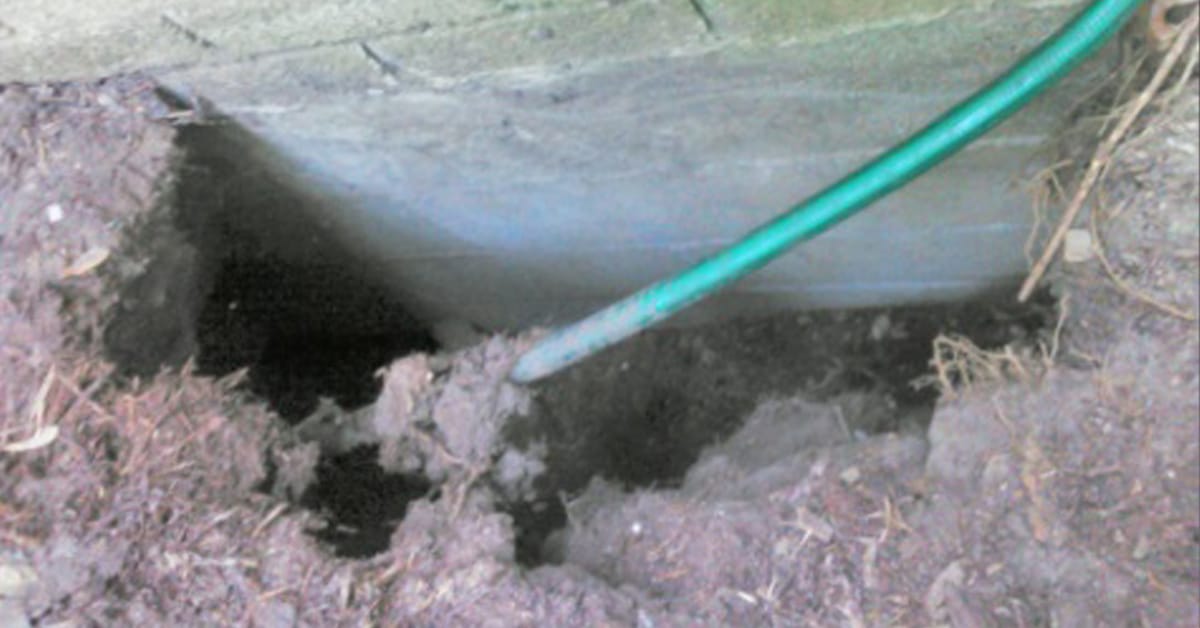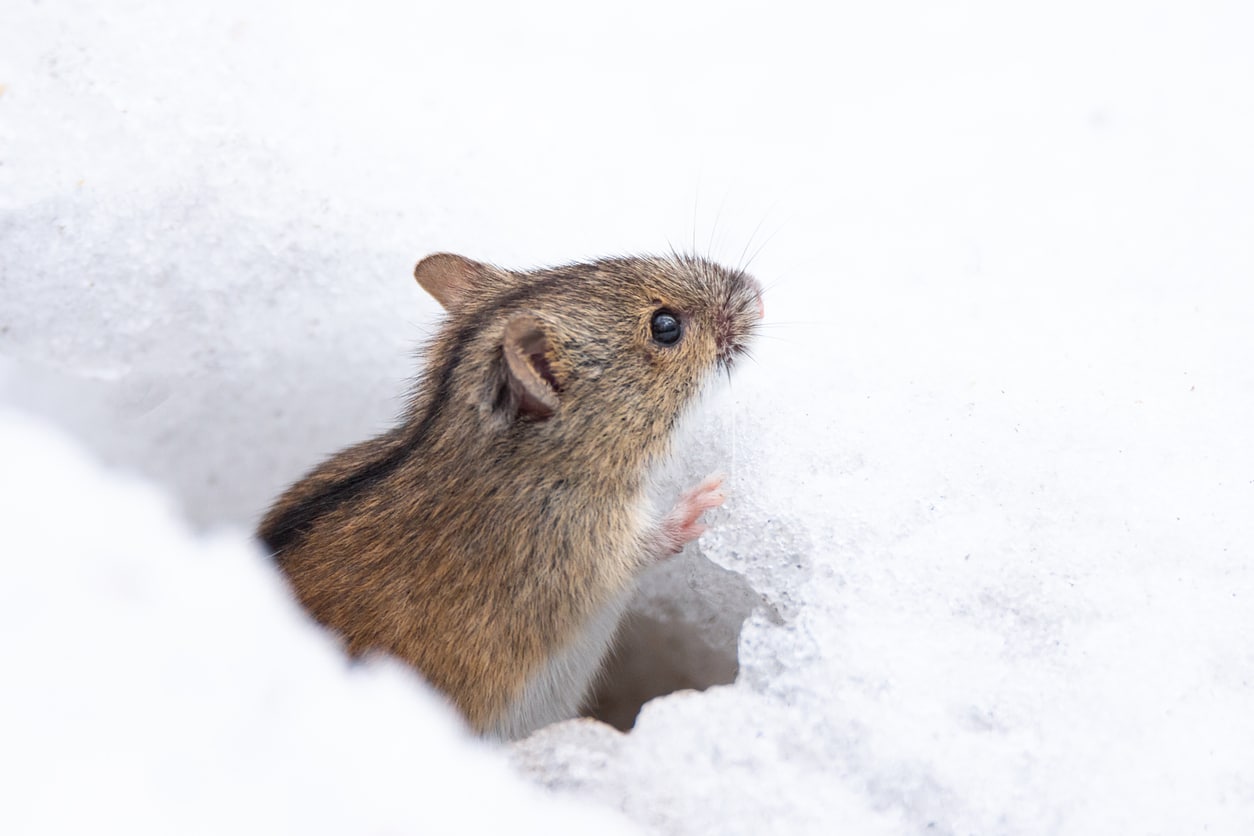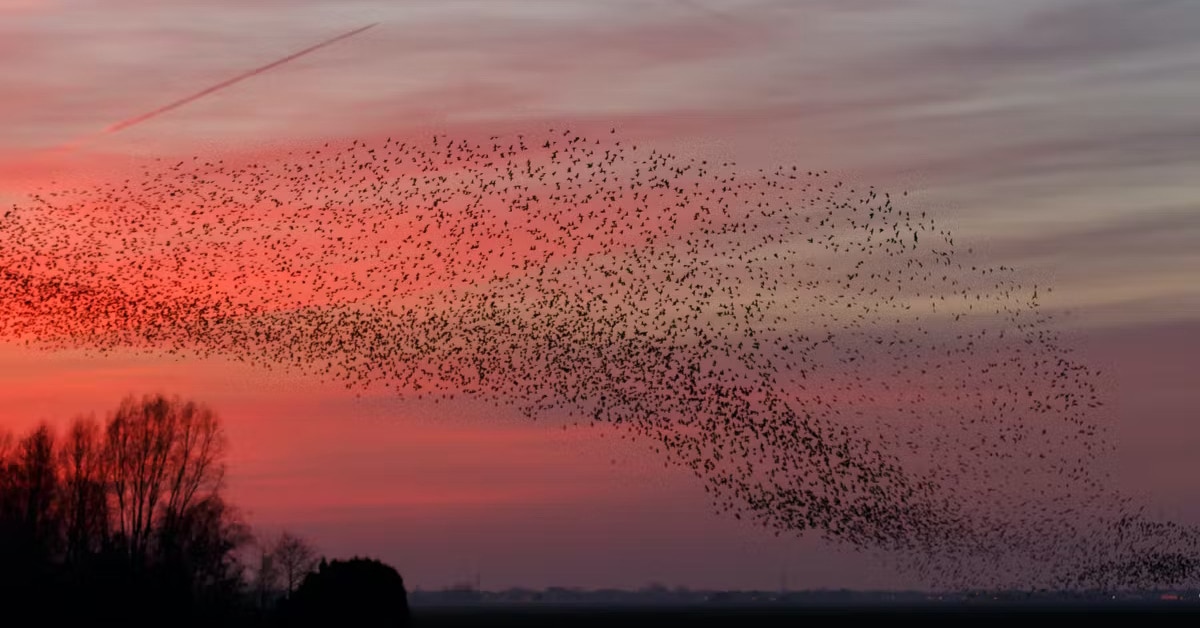With holidays, good food, and hopefully some time off from work, winter is a great…

Groundhogs and Foundation Damage
Groundhogs may look cute, but groundhog foundation damage is more serious than you think.
While groundhogs are best known for eating your garden and flowerbeds, they’re also well known for their large, distinctive burrows. These have wide, round openings, usually about the size of a melon. Most often, those burrows will have large piles of dirt thrown out around them, and be located under a structure of some kind for overhead stability. In Michigan, this usually means around a house’s foundation, under sheds and decks, under brick pavers, patios, or anything with a concrete slab.
While the animals themselves are far from dangerous, groundhog damage to foundation is cause for concern. One of Creature Control’s technicians snapped the above picture while at a woodchuck trapping job. It depicts a foundation damaged by years of unaddressed groundhog activity. The groundhog (more likely multiple by this time) burrowed down against the foundation, and was allowed to come and go for years. Because the entrance hole opened up against the foundation, water would start to seep in. This increased moisture eventually wore away one of the blocks of the foundation, causing it to crumble. Eventually, this allowed the groundhog access to the crawl space of the house itself.
One day, the entire groundhog burrow collapsed! It was only then that the homeowner realized how extensive this burrow was and learned of the degradation to the foundation block. Creature Control trapped and removed the offending groundhogs, but now a lot of work and money was going to be needed to repair the badly damaged foundation.
Don’t let this happen to you! Take action as soon as you notice the first groundhog hole on your property. For immediate help from local wildlife experts, contact Creature Control now.
- 24-hour service availability
- Exceptional service with no contracts
- Customized wildlife removal plans and humane live trapping
- Licensed, certified, and insured animal control technicians
Are Groundhogs Bad for Your Yard?
Yes, groundhog destruction is no joke. A groundhog digging holes around your foundation can cause significant damage, as shown above.
Plus, groundhog lawn damage is unsightly and unsafe. If you notice signs of groundhog, gopher, or woodchuck damage on your property,
Some of the problems that groundhogs can cause are:
- Soil erosion and considerable damage to home foundation
- Damage to pipes, wires, cables, and other underground utilities
- Creation of holes and mounds that can pose a tripping hazard
- Impacts the look of your lawn and disrupts existing water balance/irrigation
- Attracts other pests, predators, and wild animals who use the burrows as shelters or hunting grounds
- Transmission of diseases such as rabies
Groundhogs can be difficult to get rid of once they establish their burrows on your property. They are very persistent and will defend their territory fiercely. They can also hibernate for up to six months during the winter, making them hard to detect and trap. For help handling a nuisance groundhog, call Creature Control now at 1-800-441-1519 or contact us online.
How Deep Can Groundhogs Dig?
Groundhogs are excellent diggers. They can create complex tunnel systems that span up to 100 feet in length. They usually have multiple entrances and exits, as well as chambers for nesting, sleeping, and storing food.
The depth of the groundhog burrows can vary depending on the soil type, moisture level, and terrain. However, the average depth of the main tunnel is about 3 to 6 feet deep.
How to Fill Groundhog Holes
If there’s a groundhog living in your yard or under your deck or home, you need to fill their tunnels with materials they cannot easily remove or dig through. Here’s how:
- First, a material that is suitable for filling the tunnel such as gravel, sand, concrete, or clay. Avoid organic materials like soil or mulch, since this easily decomposes and attracts groundhogs.
- Next, find the burrow entrance, exit, and other access points by looking for signs of activity such as fresh dirt, tracks, and droppings.
- Fill the woodchuck burrows with the chosen material using a shovel, a hose, and/or a funnel. Make sure to pack the material tightly, leaving no gaps or air pockets.
- Repeat the process for all the entrances and exits of the woodchuck burrow until they are completely sealed.
- Monitor the area for any signs of re-entry or new digging. If you notice any activity or new groundhog holes, repeat the process until they give up.
However, even after all this effort, filling a groundhog tunnel alone may not be enough to deter groundhogs from returning to your property. You may also need to use other methods such as fencing, repellents, traps, or professional removal services.
Reach Out Now to Protect Your Home from Structural Damage
When you need Michigan groundhog control, don’t wait—call Creature Control. We’re trusted throughout Lower and Central Michigan as humane wildlife management specialists. Since 2006, we’ve upheld a commitment to complete customer satisfaction. Today we’re proud to have ten locations across the state in Brighton, Jackson, Lansing, Ann Arbor, Oakland County, Washtenaw County, Livingston County, Gregory, Auburn Hills, and Farmington Hills, MI.
A groundhog burrowing near your foundation is not something you want to ignore. If you have groundhog problems, especially against your foundation or patio, call Creature Control at 1-800-441-1519 today.


